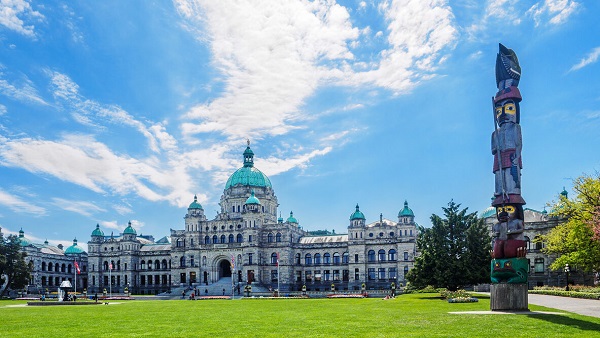Carbon Tax
A Conservative Victory Would End Liberal Oil and Gas Sector Assault and Help Diversify Away From the US
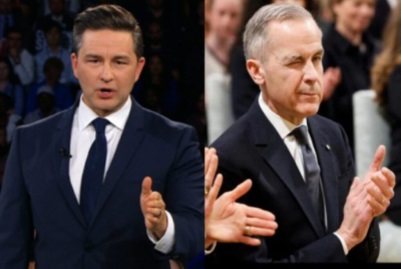
From EnergyNow.ca
By Jim Warren
A minority Liberal victory in our upcoming federal election has the potential to take anti-Ottawa sentiment on the prairies to a whole new level. That’s because a Carney government can be expected to frustrate the legitimate aspirations of millions of Western Canadians. It’s what Liberals do.
Obviously, one of the most pressing economic concerns of the oil producing provinces of Alberta and Saskatchewan is the collection of Liberal policies which are restricting growth in Canada’s non-renewable resource sector. Liberal anti-oil and anti-pipeline measures have hamstrung the capacity of the producing provinces to increase the revenue generating capacity of the oil and gas sector. They have restricted the ability of prairie people to benefit from the ingenuity, sweat and capital they have invested in their resources industries. The right to those benefits was supposedly guaranteed under the Canadian constitution.
It is far from clear that a Carney government would get behind developing increased export capacity for oil and gas. Previous statements Carney has made in support of new pipelines were clearly disingenuous. He supported a revival of Energy East when speaking in Kelowna. He went so far as to suggest the emergency powers of the government could be used to get it built. But during the French leadership debate he said Quebec would be given the power to veto any such project. Carney’s handlers should tell him it is impossible for both statements to be true at the same time.
Furthermore, Carney has expressed no intention of dismantling the labyrinthine approval processes and the legalized disruption of construction which makes export pipelines impossible to build (at least without incurring jaw dropping cost overruns). If those policy measures remain in place any pipeline given some sort of special approval, could still remain vulnerable to legal challenges and retroactive cancellation and shut down.
Let’s say special emergency approval for a pipeline is granted but the Impact Assessment Act (Bill C-69) and other onerous environmental regulations are allowed to remain in place. Couldn’t construction still be delayed or the line re-routed whenever a bird nest, arrowhead or rare plant is found on the right-of-way? Will protesters who block construction be treated with kid gloves or more like horn-honking truckers? Those are the sorts of issues that contributed to the $34 billion in cost overruns that plagued construction of the TMX.
There are, no doubt, measures a federal government could take to minimize these sorts of threats. Nevertheless, many of us expect a Carney government would not be prepared to provide truly bullet proof guarantees to new pipeline projects. The Liberals and their core supporters are too deeply invested in climate alarmist ideology to allow for the unfettered completion of pipelines or continued growth in oil and gas production.
The Liberals have already shown us who they are. They were very reluctant to enforce the law against environmental protesters during the period leading up to the cancellation of the Northern Gateway and the Keystone XL. In fact they awarded federal grants to activist organizations that helped organize protests and anti-pipeline court challenges.
Retroactive cancellation of previously approved oil production projects is a tactic recently embraced by environmental groups like Greenpeace in the UK. The Liberals’ allies in the environmental movement can be expected to apply a similar approach to new and pre-existing pipelines in Canada. The activists will no doubt be able to rely on grants from the Liberal government to fund their efforts.
There are approximately 75,000 people directly employed in extracting and transporting gas and oil on the prairies and about twice that number whose jobs rely indirectly on the sector. Several hundreds of thousands more understand how the ripple effects of the changing fortunes of the resource sector affect their province’s economies. For the past nine years those people’s interests and complaints have been ignored, frustrated and attacked by the Liberals and their allies in the environmental movement.
If the past is prologue, it is a safe bet the prairie West will be ignored and abused again should the Liberals pull off a minority election win. Their backers in the Bloc and NDP will insist on it. However, rejecting the reasonable aspirations of a large minority or majority of the citizens in the two major oil producing provinces is guaranteed to produce a precipitous decline in national harmony.
It is true there are large numbers of low information voters and woke supporters of environmental extremism in some of the big cities in the West. They are likely to elect a Liberal or two to the next parliament. But they do not represent the views of the people who create most of the wealth in the West—the people who risk their own capital and help build a more vibrant economy, as well as most of the people whose jobs involve sweating. Annoying these people, in order to garner support among the environmentally sanctimonious in Montreal and Toronto, will not make for a stronger, more united Canada.
Similarly, there are tens of thousands of farm operators who are vehemently opposed to Liberal backed measures that will limit their use of fertilizer and penalize them for owning cattle. Saskatchewan’s potash miners won’t take kindly to the imposition of export taxes on their products to save jobs in Ontario and Quebec. These are all capable people—and they don’t take being pushed around lightly.
Central Canadian fantasies about placing export taxes on Western oil shipped to the US, have already angered people in the producing provinces. Anti-Ottawa feelings on the prairies would surpass the boiling point if a Carney government actually attempted to do it.
An all too common response of federal Liberals and the talking heads in the mainstream media to spikes in Western alienation is to smugly claim, “They’ll get over it.” Don’t count on it.
Following a Liberal election win, expect court challenges over the abrogation provincial rights under the constitution and outright defiance of federal policies detrimental to Alberta and Saskatchewan. The federal government may face the prospect of having to arrest popular politicians for refusing to comply with unfair federal policies.
Cabinet Ministers in Saskatchewan have already said they would risk imprisonment for refusing to charge the carbon tax on natural gas used for home heating. The Saskatchewan government has also refused to comply with Liberal regulations requiring coal-fired power plants to be shut down by 2035. They have indicated the province can simply not afford to transition to renewables or nuclear within such a tight time frame.
Carney has had nothing to say about rescinding inane one-size-fits-all federal environmental regulations. Included in the class of mindless federal policies are plans to force people from the colder parts of the prairies to purchase electric cars and heat pumps even though they don’t function properly here in winter. We can expect many prairie people to resist the compulsory transition to EVs. And, as is the case with Liberal gun control laws, governments on the prairies are likely to ensure federal rules are lightly enforced.
More significantly, Carney would be confronted by a campaign to make significant changes to Canadian federalism that will provide greater autonomy to the prairies provinces. An additional bottom line demand will be the creation of constitutionally guaranteed energy corridors, allowing for the construction and protection of pipelines from the prairies to Canada’s coasts.
We are at a critical inflection point in our history that could influence the economic fortunes of Alberta and Saskatchewan for the rest of this century. There is a good chance that during the last half of this century renewable energy will be displacing non-renewable energy at a rate that reduces global demand for oil and gas. If this turns out to be the case, failing to get new pipelines built in the next decade will virtually guarantee a significant portion of Canada’s proven oil reserves will remain forever stranded. Hundreds of billions in potential revenues could been lost. That is, by the way, one of the goals shared by Mark Carney and the alarmist factions of the environmental movement.
Barring substantive reforms to federalism, including meaningful concessions to the producing provinces, the prospects for national harmony and less fractious federal-provincial relations are bleak. A Conservative majority victory in the upcoming federal election is clearly more likely to result in fair treatment for Alberta and Saskatchewan than a win for the Carney Liberals. Mark Carney doesn’t appear to realize heightened levels of alienation in the producing provinces have the potential to raise discontent to levels not seen since the days of the National Energy Program.
The next election could well be our last chance to ensure the producing provinces are permitted to maximize their constitutionally guaranteed capacity to generate non-renewable resource revenues.
Carbon Tax
Back Door Carbon Tax: Goal Of Climate Lawfare Movement To Drive Up Price Of Energy


From the Daily Caller News Foundation
The energy sector has long been a lightning rod for policy battles, but few moments crystallize the tension between environmental activism and economic reality quite like David Bookbinder’s recent admission. A veteran litigator who’s spent years spearheading lawsuits against major oil companies on behalf of Colorado municipalities — including Boulder — Bookbinder let the cat out of the bag during a recent Federalist Society panel.
In an all-too-rare acknowledgement of the lawfare campaign’s real goal, Bookbinder admitted that he views the lawsuits mainly as a proxy for a carbon tax. In other words, the winning or losing of any of the cases is irrelevant; in Bookbinder’s view, the process becomes the punishment as companies and ultimately consumers pay the price for using oil and gas and the industry’s refined products.
“Tort liability is an indirect carbon tax,” Bookbinder stated plainly. “You sue an oil company, an oil company is liable. The oil company then passes that liability on to the people who are buying its products … The people who buy those products are now going to be paying for the cost imposed by those products. … [This is] somewhat of a convoluted way to achieve the goals of a carbon tax.”
Dear Readers:
As a nonprofit, we are dependent on the generosity of our readers.
Please consider making a small donation of any amount here.
Thank you!
The cynicism is so thick you could cut it with a knife.
On one hand, the fact that winning is irrelevant to the plaintiff firms who bring the cases has become obvious over the last two years as case after case has been dismissed by judges in at least ten separate jurisdictions. The fact that almost every case has been dismissed on the same legal grounds only serves to illustrate that reality.
Bookbinder’s frank admission lands with particular force at a pivotal juncture. In late September, the Department of Justice, along with 26 state attorneys general and more than 100 members of Congress, urged the Supreme Court to grant certiorari in one of the few remaining active cases in this lawfare effort, in Boulder, Colorado.
Their briefs contend that allowing these suits to proceed unchecked would “upend the constitutional balance” between federal and state authority, potentially “bankrupt[ing] the U.S. energy sector” by empowering local courts to override national energy policy.
For the companies named in the suits, these cases represent not just a tiresome form of legal Kabuki Theater, but a financial and time sink that cuts profits and inhibits capital investments in more productive enterprises. You know, like producing oil and gas to meet America’s ravenous energy needs in an age of explosive artificial intelligence growth.
“I’d prefer an actual carbon tax, but if we can’t get one of those, and I don’t think anyone on this panel would [dis]agree Congress is likely to take on climate change anytime soon—so this is a rather convoluted way to achieve the goals of a carbon tax,” Bookbinder elaborated in his panel discussion.
John Yoo, the eminent UC Berkeley law professor and former Bush-era official, didn’t hold back in his analysis for National Review. He described the lawfare campaign as a “backdoor” assault on the energy industry, circumventing the federal government’s established role in environmental regulation.
“There are a variety of cities and states that don’t agree with the federal government, and they would like to see the energy companies taxed,” Yoo explained. “Some of them probably like to see them go out of business. Since they can’t persuade through the normal political process of elections and legislation like the rest of the country, they’re using this back door,” he added.
What we see in action here is the fact that, although the climate alarm industry that is largely funded by an array of dark money NGOs and billionaire foundations finds itself on the defensive amid the aggressive policy actions of the Trump 47 administration, it is far from dead. Like the Democrat party in which they play an integral role, the alarmists are fighting the battle in their last bastion of power: The courts.
As long as there are city and county officials willing to play the role of plaintiffs in this long running Kabuki dance, and a Supreme Court unwilling to intercede, no one should doubt that this stealth carbon tax lawfare effort will keep marching right along.
Business
Emission regulations harm Canadians in exchange for no environmental benefit
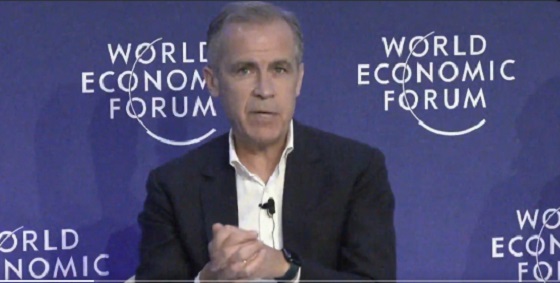
From the Fraser Institute
By Julio Mejía and Elmira Aliakbari
The PBO estimates that the CFR will decrease Canada’s economic output by up to 0.3 per cent—or approximately $9.0 billion—in 2030. For context, that’s more than the entire output of Prince Edward Island in 2024, so the effects are roughly equivalent to wiping out the economy of a whole province.
The Carney government recently announced changes to the Clean Fuel Regulations (CFR), signalling stricter carbon content rules for gasoline and diesel—though few details were provided. While the prime minister expressed confidence that the changes will strengthen the Canadian economy, in reality, the CFR is designed to increase fuel prices in exchange for negligible environmental benefits. If the government is serious about prioritizing the wellbeing of Canadians, it shouldn’t tinker with the CFR—it should eliminate it.
The CFR, which came into effect in July 2023, aims to reduce greenhouse gas (GHG) emissions by requiring a gradual reduction in the carbon content of gasoline and diesel. By 2030, fuels must contain 15 per cent fewer GHG per unit of energy than in 2016. Those who don’t meet the target must buy compliance credits, which raises their costs. Ultimately, these costs are all passed on to Canadians at the pump.
According to a recent study by the Parliamentary Budget Officer (PBO), the CFR is expected to increase fuel prices by up to 17 cents per litre for gasoline and 16 cents for diesel by 2030. These costs will be added on top of already high, policy-driven fuel costs. In 2023, for example, the average price of gasoline in Canada was 157.3 Canadian cents per litre, compared to just 129.4 cents per litre in the United States—a 21 per cent difference, mainly the result of fuel taxes in Canada.
As fuel prices rise due to the CFR, the costs of running tractors, powering machinery, and producing and transporting goods and services will all increase, setting off ripple effects across our economy. The PBO estimates that the CFR will decrease Canada’s economic output by up to 0.3 per cent—or approximately $9.0 billion—in 2030. For context, that’s more than the entire output of Prince Edward Island in 2024, so the effects are roughly equivalent to wiping out the economy of a whole province.
Of course, increases in fuel prices also mean more pressure to household budgets. The PBO estimates that in 2030, the average Canadian household will incur $573 in additional costs because of the changes to the CFR, and lower-income households will bear a disproportionately larger burden because they spend more of their budget on energy.
The policy’s uneven impact across provinces is particularly significant for lower-income regions. For example, households in Nova Scotia and P.E.I.—two of the provinces with the lowest median household incomes—are expected to bear average annual costs of $635 and $569, respectively. In contrast, families in Ontario and British Columbia—two of the provinces with higher median household incomes—will pay less, $495 and $384 per year, respectively. Simply put, the CFR imposes more costs on those who make less.
To make matters worse, the expected environmental benefits of the CFR are negligible. Even if it delivers its full projected reduction of 26 million tonnes of GHG emissions by 2030, that represents only “two weeks of greenhouse gas emissions from the Canadian economy,” according to the federal government.
Given that GHG emissions cross all borders regardless of where they originate, in a broader perspective, that reduction represents just 0.04 per cent of projected global emissions by 2030. So, Canadians are being asked to pay a material price for a measure that will have virtually no environmental impact.
Toughening regulations on carbon content for gas and diesel won’t benefit Canadians, in fact, it will do the opposite. The CFR places a real financial burden on Canadian households while delivering no meaningful environmental benefit. When a policy’s costs vastly outweigh its benefits, the answer isn’t to adjust it, it’s to scrap it.

Julio Mejía
-
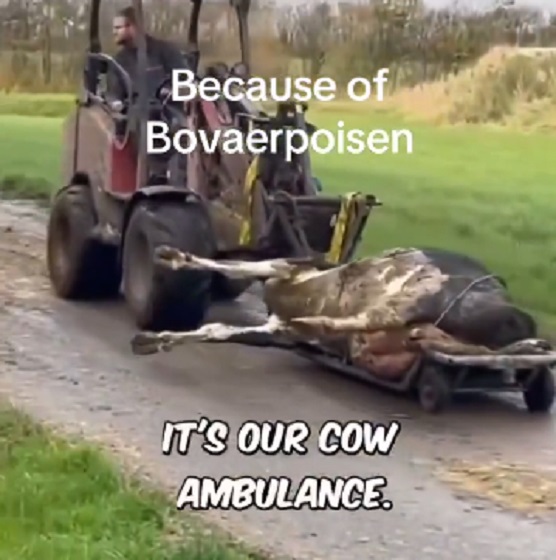
 Agriculture21 hours ago
Agriculture21 hours agoDanish Cows Collapsing Under Mandatory Methane-Reducing Additive
-

 Bruce Dowbiggin2 days ago
Bruce Dowbiggin2 days agoA Story So Good Not Even The Elbows Up Crew Could Ruin It
-

 Alberta2 days ago
Alberta2 days agoCanada’s heavy oil finds new fans as global demand rises
-
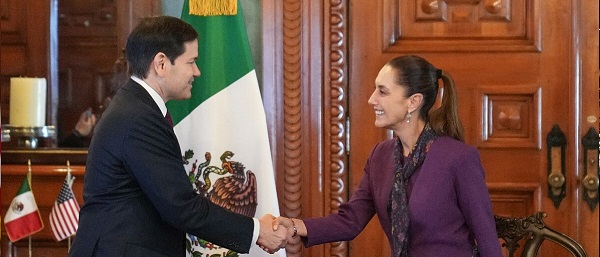
 Daily Caller1 day ago
Daily Caller1 day agoTrump Reportedly Planning Ground Troops, Drone Strikes On Cartels In Mexico
-
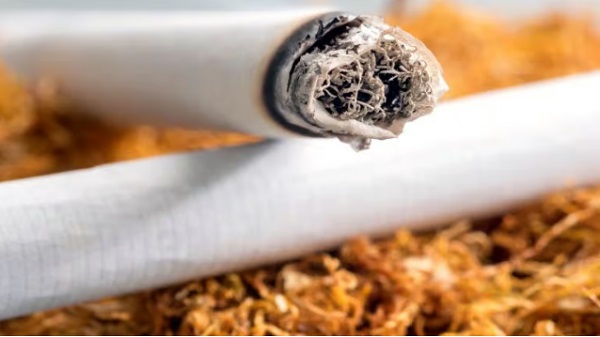
 Addictions2 days ago
Addictions2 days agoThe War on Commonsense Nicotine Regulation
-

 Health2 days ago
Health2 days agoRFK Jr’s argument for studying efficacy of various vaccines
-

 Business1 day ago
Business1 day agoTrump’s Tariffs Have Not Caused Economy To Collapse
-
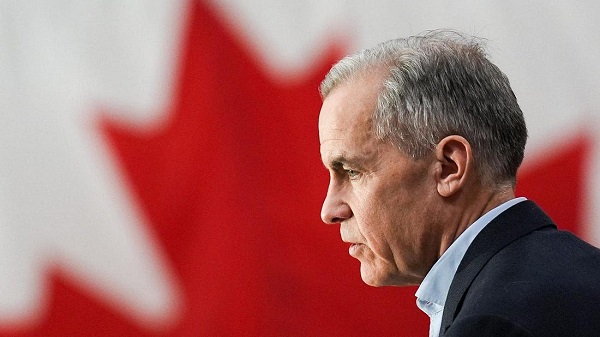
 Business1 day ago
Business1 day agoCarney government’s first budget should signal end to crippling ‘climate’ policies




